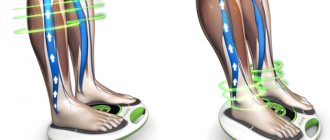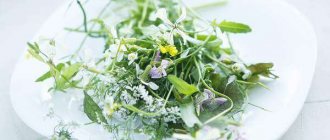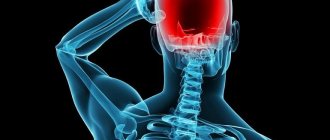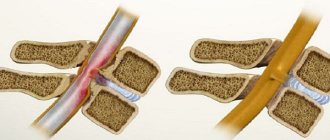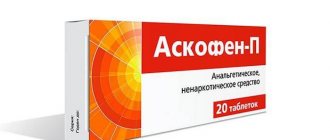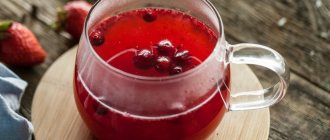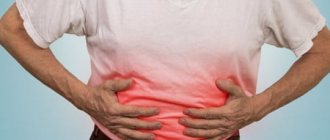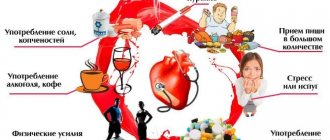Manifestations of hydrocephalic syndrome, main goals of therapy
Hydrocephalus is manifested by the following clinical symptoms.
The symptomatic complex includes headaches, vomiting, enlarged head size, nervousness, and anxiety. Hydrocephalus has its own specific symptom: vomiting and headaches worsen upon awakening. This can be explained by the patient's supine position. The drainage of lymph worsens, especially if the patient has been lying down for a long time. When waking up, patients are tormented by very strong bursting pains in the head, which are accompanied by vomiting, which does not bring relief. For this, the patient is prescribed diuretic drugs (Lasix, Furosemide), which will remove excess fluid from the body. Against the background of a severe headache, patients (especially children) are very agitated, so they are prescribed sedative therapy (according to indications).
Surgical treatment of this pathology is very common. Patients undergo ventricular bypass surgery. The shunt ensures the outflow of excess cerebrospinal fluid into the bladder and abdominal cavity.
Modern shunts have special valves that prevent bacteria from entering the brain, open independently when ICP increases, and close when it decreases. Shunts must be changed once every six months. The child's shunt is changed as he grows. In newborns, ventricular puncture is often performed to lower ICP. This allows you to quickly relieve high ICP, as well as pain.
Ventriculoperitoneal shunt
How to cope with illness
The first thing to do if you discover the above symptoms in yourself or a loved one is to consult a doctor. Only a specialist, after certain studies, can make a correct diagnosis and identify the causes of the disorder.
There are two groups of drugs that are used in traditional medicine to treat intracranial pressure. Tablets from the first are used for emergency normalization of the condition, removing a person from a period of exacerbation. The latter are used for consistent relief of the disease.
Therapy of intracranial pressure with folk remedies in adults and children is gentle and effective. It does not negatively affect the digestive organs, circulatory and nervous systems. However, its use is also best agreed with a specialist.
Herbal medicine can lead to a decrease in intracranial pressure. Also, with regular use, there is an effect on the symptoms of the disease: headaches are relieved, vision improves, signs of weakness and nausea are stopped, and the nervous system returns to normal.
However, with regular use, herbal medicine can significantly promote recovery.
You just need to make sure that there is no allergic reaction or individual intolerance; you should also carefully use herbs for pregnant women.
How to relieve intracranial pressure at home
There are often cases when there is an urgent need to reduce high ICP, and pills are not needed for this. Even in such situations, alternative medicine offers methods to treat intracranial pressure with folk remedies. The main feature of the recommendations given is that most of them can be applied not only to adults, but also to children.
The actions of all kinds of tinctures, potions, baths, compresses and decoctions are aimed at relieving painful symptoms and reducing the quantitative content of cerebrospinal fluid in the skull. Medicinal plants have long been used to achieve this effect.
So, how to get rid of intracranial pressure without drugs using folk remedies? Treatment of the symptoms of the disease is possible with the help of herbal remedies obtained by processing the generative and vegetative organs of plants such as garlic, rose hips, stevia, meadow clover, thistle, hawthorn, yarrow, calendula, valerian, flax seeds, lavender. In addition, from these raw materials it is possible to easily obtain alcohol tinctures, which are stored for quite a long period of time. You should keep them in your first aid kit just in case. The help provided by herbal remedies boils down to the fact that headaches are reduced and blood circulation in the brain is normalized.
In addition to treatment with herbal remedies, there are other ways to relieve intracranial pressure at home. It is worth resorting to simple physiotherapeutic methods, which include massage, rubbing lavender oil into the temple area at night, wiping the ears with cold water. When used in combination, all these measures are especially effective. Below are recipes for decoctions and tinctures aimed at reducing intracranial pressure.
Signs of intracranial pressure
- constant pressing and bursting headache, worsening at night, when weather conditions change, during sudden movements of the head;
- vegetative-vascular dystonia, accompanied by profuse sweating, dizziness, tachycardia or bradycardia;
- rapid fatigue with minimal physical exertion, weakness, irritability;
- nausea and vomiting not associated with digestive processes;
- decreased reflex functions: coordination, concentration, memory, as well as hearing and vision;
- swelling of the optic nerve, lack of reflex reaction of the pupil to light;
- blueness under the eyes.
In children under 2 years of age, the key signs of intracranial hypertension, in addition to those described above, are:
- disproportionate head growth;
- swelling of the fontanelle;
- prominent forehead;
- a pronounced venous network on the head, clearly visible under the skin;
- chin tremor;
- anxiety and tearfulness, intensifying at night.
A sharp increase in ICP manifests itself in severe form and may be accompanied by:
- incessant vomiting;
- impaired respiratory function and limb failure due to cerebellar entrapment;
- epileptic seizures and loss of consciousness;
- loss of vision.
If several of these symptoms become frequent or permanent, you should consult a neurologist who will identify the cause of the increase in brain pressure and prescribe appropriate treatment.
Causes
The pressure of the cerebrospinal fluid on the cerebral cortex is called intracranial. If fluid accumulates and stagnates in the brain and cerebellum, this leads to intracranial pressure. This pathology is accompanied by bursting, throbbing pain and dangerous symptoms. Increased ICP may indicate head diseases.
Causes of pressure include pathologies or features such as:
- birth defects;
- birth injuries;
- consequences of traumatic brain injury;
- pathologies in the cervical region or spine;
- aneurysm;
- stroke;
- hydrocephalus (in newborns);
- epilepsy;
- neoplasms (benign and malignant);
- infectious process in the brain (encephalitis, meningitis, etc.).
Before treating intracranial pressure with folk remedies, you should undergo a comprehensive examination. This will allow the specialist to determine the causes of pressure inside the skull and prescribe effective therapy.
All reasons are divided into 3 large categories, depending on which of the structures the violations are observed.
The first category is cerebral hypertension. It is associated with abnormal structures that occur in the brain. The most common cause is a brain tumor, but other disorders can also lead to this disease:
- brain abscess;
- subdural or epidural hematoma (most often this is a consequence of various types of head injuries);
- swelling of the brain (during encephalitis, meningitis and other diseases).
The second category is venous hypertension. In this case, intracranial pressure increases due to increased venous pressure in the vessels passing through the brain. The cause is pathologies associated with the cardiovascular system. This could be sagittal sinus thrombosis, occlusion of the superior vena cava, or other abnormalities.
And finally, the third category is cerebrospinal fluid hypertension (cerebrospinal fluid). It is associated with impaired circulation of liquor or an imbalance between its production and absorption. Intracranial hypertension in children deserves special attention.
Intracranial hypertension syndrome develops in children for various reasons. These include birth injuries, deep prematurity, intrauterine infections, as well as fetal hypoxia, congenital hydrocephalus, microcephaly, etc.
The pressure of the cerebrospinal fluid on the cerebral cortex is called intracranial. If fluid accumulates and stagnates in the brain and cerebellum, this leads to intracranial pressure. This pathology is accompanied by bursting, throbbing pain and dangerous symptoms. Increased ICP may indicate head diseases.
- Head injuries;
- tumors;
- consequences of meningitis;
- neurological diseases;
- suffered a stroke;
- overweight;
- birth trauma or intrauterine infection;
- changes in atmospheric pressure and humidity.
General principles of treatment
To understand how to treat intracranial pressure, you need to understand the mechanisms of occurrence of this syndrome in a particular patient, and this is the doctor’s task.
Increased ICP is always a consequence of some pathology in the human body. To completely get rid of the painful condition and normalize blood pressure, it is necessary to eliminate the primary disease, which is not always possible to do quickly. People sometimes have to struggle with this condition for years until the cause is identified and eliminated.
To urgently reduce intracranial pressure when there is a threat of displacement of important structures and herniation of the brain, various medications are used in a hospital setting. All patients with chronic diseases and a high risk of liquor hypertension should know how to reduce ICP at home. First of all, the following recommendations should be followed:
- limit daily consumption of table salt;
- reduce fluid intake - drink no more than 1.5 liters per day;
- periodically discuss with your doctor the need to take diuretics (Diacarb, Diuver, Furosemide tablets or others);
- refuse to visit baths, saunas, beaches, and do not be in the open sun;
- do not take hot baths, swim only in warm water;
- sleep in a cool room with an extra pillow;
- do not engage in strength sports, avoid endurance activities and heavy lifting;
- refuse air travel and high-speed elevator rides;
- massage the neck and collar area once a quarter;
- include foods rich in potassium in your daily diet (dried apricots, prunes, potatoes, pumpkin, greens);
- treat existing concomitant diseases - high blood pressure, epilepsy, etc.;
- Avoid the use of any vasodilators (eg, nitrates).
Compliance with these recommendations will help reduce the risk of increasing intracranial pressure to critical levels requiring hospitalization.
Prevention of ICP
Preventive measures to normalize ICP are part of complex treatment. After drug treatment, a period of remission begins, which can be increased significantly if you adhere to the following recommendations:
- Optimally distribute physical and mental stress, set aside time for daytime sleep, and minimize working at the computer and watching TV.
- During the day, ensure a balanced diet: limit the consumption of fatty and smoked foods, coffee, chocolate; include vegetables, fruits, lemons, nuts, beans, buckwheat porridge in your diet.
- People susceptible to increased ICP should avoid tobacco and alcohol.
- Do therapeutic exercises, swimming, roller skating or cycling.
- Regularly undergo sanatorium treatment, practice acupuncture, massages, manual and physiotherapeutic procedures, Charcot's shower, depending on the indications.
- Use herbal infusions and decoctions, inhalations and aromatherapy to prevent increased brain pressure and the appearance of cephalgia.
- In summer, avoid prolonged exposure to the sun and heat stroke.
Do you have a question? Ask it to us!
Feel free to ask your questions right here on the site.
Comprehensive implementation of the recommendations will significantly reduce the risk of exacerbation of brain pathologies that contribute to increased ICP.
How to treat intracranial pressure with folk remedies
What folk remedies are most effective for intracranial pressure? Mainly, we are talking about homemade preparations from medicinal plants. It is generally accepted that, unlike pharmaceutical drugs, traditional medicines are completely harmless and therefore preferable. This is wrong. Folk remedies, just like pharmaceutical ones, can cause harm if used for other purposes; in addition, they are much more likely to cause allergies. They usually act more mildly, but for this reason they cannot replace drug therapy when it is required, but are used as a supplement. But even in this case they may be incompatible with medications. That is why treatment with folk remedies must be agreed with the attending physician.
Below are several drugs used in the treatment of intracranial hypertension that are easy to prepare at home.
- Tea made from peppermint leaves, lemon balm, chamomile, linden flowers, mulberry - this tea is useful to replace regular black tea and coffee.
- An infusion of black poplar buds or corn silk is used as a diuretic.
- Alcohol tincture of clover flowers - fill half a jar with dry clover, fill with alcohol or vodka to the top and leave for two weeks in a cool, dark place. Then drain the tincture and strain. Take ½ teaspoon 1-2 times a day.
- Lemon-garlic mixture - grind 2 lemons and 2 heads of garlic into a paste, pour in 2 liters of heated water (not boiling water!), leave for a day in a dark place, then strain and take 30 ml in the evening before bed.
- Tincture of peppermint, motherwort, valerian, eucalyptus and hawthorn. All ingredients are mixed in equal parts, a tablespoon of the dry mixture is poured into 0.5 liters of vodka, left for a week in a dark place, then drained and filtered. Take 20 drops three times a day.
- A decoction of wild rosemary, motherwort and cudweed - mix the dry raw materials in equal parts, pour a tablespoon of the mixture into a glass of water and boil for 5 minutes, then leave the decoction for 4 hours, then filter. Take 0.5 cups before meals.
Rubbing a little warmed lavender oil into your temples can help relieve headaches.
Do diuretics help in the fight against intracranial hypertension?
The brain contains a fluid that protects the gray matter from overload and mechanical stress - cerebrospinal fluid. With increased intracranial pressure (ICP), the pressure of cerebrospinal fluid on the brain tissue increases, this causes swelling, worsening well-being. To treat intracranial hypertension, it is necessary to remove excess water from the body, so various diuretics are used. The drugs allow you to normalize pressure in the subcortex, therefore, reduce swelling of the brain tissue and relieve unpleasant symptoms. Diuretics can be roughly divided into drugs of conservative medicine and herbs.
Herbs against intracranial hypertension
In addition to the methods of conservative medicine, various decoctions and herbal infusions are often prescribed. The following medicinal herbs stabilize ICP:
Clover, lavender, and plantain have proven themselves to be the most effective herbs for easily relieving pressure in the kidneys.
- Lavender essential oil in the form of inhalation or when applied in a small amount to the temporal area. Lavender infusion is used for hypertension as a diuretic as prescribed by a doctor.
- A product based on clover flowers with a mild choleretic effect. This diuretic healing herb rids the body of toxins, normalizes stomach function, and restores metabolism. Preparation: fill the container with inflorescences, fill with medical alcohol to the top, leave for 2 weeks in a cool, dark place, strain thoroughly. The tincture will be beneficial if you take no more than 1 dessert spoon (10 ml) per day, diluted with a glass of water.
- Plantain herb has a diaphoretic and diuretic effect, is a diuretic, sedative and anti-inflammatory drug. Prepare the decoction as follows: boil 0.5 liters of water, add 4 tbsp. l. dry plantain leaves, leave, covered, for a couple of hours.
Such folk remedies help get rid of unpleasant symptoms of intracranial hypertension, but they do not eliminate the immediate cause of its occurrence. Therefore, it is unacceptable to use only herbs; it is imperative to consult with your doctor regarding the use of other medications for pain relief and alleviation of the disease.
Pharmacological drugs
The drugs used for the drug treatment of ICP are divided into the following groups:
- Diuretics (“Diacarb”, “Glycerol”, “Furosemide”). The principle of their action is similar to herbal diuretic formulations for intracranial pressure.
- Vasoactive drugs (magnesium, magnesium sulfate) have a strong effect, which helps reduce intracranial pressure.
- Painkillers and injections, including non-steroidal ones (Nimesil, Ketonal, Treximed).
Independent selection of remedies for ICP is prohibited.
Most of these remedies are specific, differ in their application characteristics and have contraindications. It is strongly not recommended to select a therapeutic ICP regimen on your own! Self-medication is unacceptable and can significantly worsen the condition. Treatment should be prescribed by an appropriately qualified specialist based on research results.
Rules for the use of medicines
Medicinal herbs should be used only as an auxiliary treatment method for hydrocephalic syndrome. It will not be possible to relieve the symptoms of hydrocephalus without standard therapy, since herbs do not have a very powerful diuretic effect, and also do not prevent a decrease in the secretion of cerebrospinal fluid.
Before using traditional medicine, you should definitely consult a doctor, since even herbal preparations have contraindications. In children, most medicinal herbs can only be used from the age of 12, because severe allergic reactions are possible. Some plants can reduce blood clotting. They are not used during pregnancy so as not to lead to uterine bleeding. You cannot treat (give medicine orally) newborn babies with fresh herbs. This is dangerous due to severe allergies, dehydration, and bleeding.
At home, herbal medicines should be used in courses for up to 10 days, then take a break. If there is a need to take diuretic herbs to reduce ICP, then it is better to alternate drugs with each other. To enhance the therapeutic effect, you can use herbal remedies. This helps reduce ICP in a short time.
Birch buds, lingonberry leaves, and bearberry go well together. You need to take 1 teaspoon of these substances, mix, add 250 ml of water. The solution should be heated in a water bath for a quarter of an hour, leave, and pass through gauze. Drink the drug 1 tablespoon three times a day. Diuretics are best taken after or during meals, since most of them have tannins that negatively affect the mucous membrane of the digestive tract.
Traditional methods of treating high and low ICP
Then it is recommended to put on a thin cellophane cap and tie a towel around your head. As a result, you can avoid problems with ICP in the morning, and also reduce the likelihood of its increase at night. Another popular express method for reducing ICP is rubbing hot lavender oil into your temples. The oil itself can be purchased ready-made at the pharmacy, or you can prepare it yourself. The homemade composition is made from dry lavender herb and high-quality olive oil.
The components are combined in a 1:1 ratio. The mixture should be infused for 20 days. After this, it must be strained. It is recommended to use by carefully rubbing a small amount into the temples at the first signs of pain. A variety of herbal decoctions are quite effective, the regular use of which helps to reduce elevated ICP.
Mulberry is a herb that helps relieve pain very well. For oral administration, prepare a decoction and take it 20 minutes before meals. There are about 20g of herbal raw materials per liter of water.
Alcohol tincture of meadow clover has proven itself positively. Herbal raw materials are collected, cleaned and tightly placed in a jar. After this, it is filled with vodka or alcohol composition 40°. In this form, the raw materials are aged for two weeks. Use plantain tincture regardless of food intake, diluting 10 ml in a glass of water, 1-2 times a day.
A complex herbal tincture is very effective. To prepare it, take equal parts of hawthorn, mint, eucalyptus, motherwort and valerian. All herbs are carefully crushed and packaged. A tablespoon of this mixture goes into 0.5 liters of vodka or alcohol solution. Infuses for 20-30 days. After this, carefully filter and use 20-25 drops when symptoms of increased intracranial pressure occur.
A mixture of lemon and garlic minced through a meat grinder is not only an excellent remedy for colds, but also a tried and tested cure for high ICP. To prepare the medicine, take two lemons and combine them with one head of garlic. The gruel is not consumed in its pure form: this can cause an increase in stomach acidity. It should be diluted with warm water and taken before bed. The indicated proportion requires 2 liters of water. Single dose – 30 ml.
But not only decoctions and alcoholic tinctures of herbs help. An excellent way to normalize ICP is inhalation. In this case, a simple bay leaf is used for treatment, which every housewife has in the kitchen. The leaves are poured with boiling water and breathed while holding the head above the container.
Herbal infusions
Quite common folk remedies for ICP are a variety of herbal decoctions. The raw materials used are lavender, mulberry twigs, poplar, plantain, nettle and string leaves, as well as lemon and garlic.
Lavender decoction
A teaspoon of dried lavender is poured into 0.2 liters of boiling water and boiled for about two more minutes. Then the decoction is infused for half an hour, after which it can be consumed.
Drink 1 tbsp of the product. l. afternoons for a month. Afterwards they take a break for two weeks and repeat the course. To maximize the effect of the decoction, it is recommended to rub it into the scalp before going to bed.
Mulberry decoction
Intracranial hypertension can also be eliminated with a remedy from mulberry. To do this, take a bunch of young tree branches of medium size, fill them with 1000 ml of water and set to boil for 10 minutes. Then the product is cooled and filtered, after which it is divided into 3 equal parts, which are consumed throughout the day. It should be noted that the product must be fresh every day.
Plantain infusion
For cooking, take 3 tbsp. l. leaves of the plant, 0.5 liters of water and boil the herb for 15 minutes. Then the product is kept for another hour in a thermos or in a saucepan with a closed lid. The strained medicine is drunk 50 ml four times a day.
Decoction of nettle and string
Take 3 tbsp. l. a mixture of herbs (plants are mixed 1:1) per 1000 ml of water and prepare the product for 15 minutes over low heat. Then the cooled and strained decoction is consumed in 50 ml doses before main meals.
Decoction of poplar leaves
A glass of dry raw material is poured with 500 ml of water and boiled for about 10 minutes. Afterwards, the broth is infused for an additional hour, strained, topped up with boiling water to the initial volume and taken 3 times a day, 70 ml.
Infusion of garlic and lemon
It is necessary to chop two medium heads of garlic and two onions, using a very fine grater. The resulting mass is poured into 1500 ml of hot water (not boiling water), stirred, the container is tightly sealed and kept for 24 hours in a dark place at room temperature. Afterwards, the product is strained, squeezed and consumed daily, 2 tbsp. l. at night for at least 14 days.
Alcohol infusions
However, alcohol infusions from medicinal herbs are no less popular. I especially love the remedy made from clover, as well as using herbal extracts.
Clover flower infusion
To prepare the product, pour half a liter jar of dried flowers with vodka to the very edge of the container. After this, the jar is placed in a place inaccessible to sunlight for 3 weeks and shaken every 2 days. The course of taking the finished product is 3 months. The tincture is drunk twice a day without reference to meals. Upon completion of the course, a break of 3 weeks is usually taken, after which the treatment can be repeated.
Infusion of herbs
To prepare such an infusion, you will need the herbs of mint, valerian, motherwort, hawthorn and eucalyptus, which are taken in equal proportions. Pour the collection with 500 ml of vodka, after which the product is kept in a warm place for 15 days. Take 1 tsp of the tincture, after diluting it in 100 ml of water. This remedy also has a beneficial effect on the nervous and cardiovascular systems.
Compresses
As a rule, for problems with ICP, an alcohol compress with camphor oil is used. It is necessary to connect 2 tbsp. l. alcohol and 50 ml of camphor oil. Then the resulting product is rubbed into the head with massage movements, after which a rubber cap is put on the head, which is wrapped with a woolen scarf on top. Leave the compress overnight and wash your hair in the morning. The therapeutic course consists of 10 such procedures.
Medicine prescriptions
Does garlic and lemon help lower blood pressure?
An effective medicine is obtained from lemon and garlic.
The drug can quickly reduce intracranial pressure. To prepare, you will need 2 lemons and one head of garlic. Citrus must be washed thoroughly, preferably with hot water. Peel the garlic. Pass the ingredients through a meat grinder or blender. The consistency should resemble puree. You cannot take the medicine in this form, as it can irritate the gastric mucosa. It needs to be diluted in 2 liters of water. Take 20 milliliters before bedtime. The course of treatment is 2 months.
Clover flowers
You can treat cranial pressure with alcohol tincture, which can lower blood pressure, improve blood circulation and oxygen supply to the brain. To prepare, you should prepare the plant in advance: compact the grass into a liter jar. Then add vodka or alcohol. Close the lid and let it brew for 3-4 weeks in a warm and dark place. To use, you need to dilute 10 milligrams of infusion in 1 glass of water. Drink 2 times a day for 1 month.
Healing herbs
To get rid of intracranial pressure in children (from 12 years old), it is recommended to take complex decoctions and tinctures of medicinal herbs. Recipes:
To prepare the infusion you will need lavender flowers.
- Combined infusion. The medicine perfectly calms the central nervous system and relieves muscle tension. For preparation you will need the following components (in equal quantities): mint, hawthorn, valerian, eucalyptus and motherwort. Grind all components and mix thoroughly. Mix 2 tablespoons of herbs with 1 liter of vodka. Leave for 30-40 days, strain. Take 15 drops in case of high blood pressure.
- Lavender infusion. Perfectly calms nerves, relieves tension and headaches in children and adults. To prepare, you need to mix lavender flowers and olive oil in 1:1 proportions. Pour into a container and leave for 20 days. Next, strain and mix with Kalanchoe juice. Apply the product to your nose 2 times a day (1 drop).
- Plantain tincture. Before cooking, you need to prepare the plantain: collect the leaves from an environmentally friendly area and dry it. Pour 3 tablespoons of dry plant with 0.5 liter of water and put on low heat. Warm up for 15 minutes. Pour into a container with a lid. Leave for 3-5 hours, strain. Take 1 tablespoon per day. The grass is safe for children.
Radish and horseradish
Such products are used mainly for compresses. They are used during periods of exacerbation of the disease. Radish and horseradish can relieve headaches and neck spasms. To prepare, you need to take 1 vegetable. Peel and wash them. Grate on a fine grater or in a blender. To stir thoroughly. Spread the pulp evenly on a gauze bandage and apply to the calf muscles.
Other means
Children can also drink birch sap with such an illness.
Birch sap is a very useful natural medicine for intracranial pressure. It contains many vitamins and microelements that have a beneficial effect on the body: lower blood pressure, improve metabolism at the cellular level, and restore oxygen supply to the brain. The juice can be drunk in unlimited quantities, even for small children.
Infusion of lavender flowers
An infusion of lavender flowers is a folk remedy for treating intracranial pressure in adults. It helps to quickly get rid of the symptoms of an unpleasant illness. A number of simple steps must be performed to prepare a preparation from this plant:
- Dried lavender petals (300 g) are poured with boiling water, then boiled for 2 minutes.
- The resulting mixture is infused for at least half an hour.
- The decoction is drunk after lunch for one month. After a month, a two-week break is taken, and then treatment continues for another 30 days.
To ensure a more effective result, in addition to taking this drug orally, they should rub the patient’s forehead at night.
Another good recipe:
- the lavender herb is thoroughly crushed, then poured with an equivalent amount of olive oil;
- the product is put away in a dark place for twenty days, after which it can be considered infused;
- the infusion is filtered and mixed in equal parts with Kalanchoe juice;
- the resulting product is taken orally, one tablespoon at a time.
In addition to decoctions and infusions, there are other methods to lower intracranial pressure at home. These include the use of compresses, inhalations and baths.
Treatment with folk remedies for intracranial pressure recipes
It is possible to reduce intracranial pressure not only with the help of synthetic drugs, but also traditional medicine. Folk remedies can act as both independent and auxiliary therapy in the treatment of symptoms of intracranial pressure, but you can start using them only after consulting with your doctor. To combat the disease, decoctions, tinctures, and compresses of medicinal herbs are used.
Medicinal herbs and their decoctions
Traditional methods of treatment have shown positive results in treating the disease.
Temporary and permanent relief from increased intracranial pressure can be achieved with the help of herbal infusions, the recipes of which have been tested for more than one generation:
- To prepare a decoction of poplar leaves, 450 ml of water is required for 1 cup of dry leaves. Cook for 15 minutes and leave for an hour. After straining, add boiling water to the mixture to the initial amount, drink 50 ml after meals.
- Lavender decoction. A teaspoon of the flowers of this plant should be poured into a glass of water and boiled. Leave for half an hour. Drink a tablespoon every evening for a month. After taking a two-week break, repeat the course. The mixture can be rubbed into the scalp (used to treat intracranial pressure in children).
- To prepare a folk remedy based on mulberry branches, the raw materials need to be finely broken and, pour 1 liter of water, boil for 20 minutes. Cool, strain and drink in three doses. A fresh portion is brewed daily.
- Nettle with string. Nettle and string herbs in a 1:1 ratio are poured into a liter of boiling water and infused for an hour, drink 50 ml of this mixture 3 times a day.
Herbal infusions
Treatment of intracranial pressure with herbal infusions is aimed at reducing ICP levels, improving blood circulation and removing excess swelling. Properly prepared infusions increase the body's resistance to infections, improve immunity and improve digestion. Traditional recipes are very easy and quick to prepare.
Clover infusion
Clover tincture can be prepared at home.
A decrease in intracranial pressure is provoked by a tincture of meadow clover with alcohol. To prepare the potion, you need to compact the washed clover into a glass container and fill it with vodka or alcohol. This mixture is infused for half a month. Take 10 ml of infusion daily, diluting it in a glass of water. The course of treatment is a month. If necessary, repeat 3-4 times a year.
Garlic tincture
To prepare an effective folk remedy based on garlic and lemon, you need to pass 2 lemons and 1 large head of garlic through a meat grinder. Dilute the drug with warm water (2 liters) and after straining, drink 30 drops during acute attacks of headaches due to ICP. It is not recommended to consume the mixture in its pure form, as this combination leads to increased acidity in the stomach.
Plantain
Traditional treatment with plantain has a positive effect on intracranial pressure. To prepare the mixture, you need 5 tbsp. l. dry raw materials, take a liter of water, boil and leave for an hour. Take adult patients 60 ml 3 times a day, children under 10 years old - 5 ml, over 10 years old - 15 ml. Continue treatment for no more than a month, then take a break.
Herbal compresses on the head can reduce high blood pressure.
Manifestations of intracranial pressure can be effectively treated using compresses:
- Mint compresses. Brew a glass of mint leaves in a liter of water, cool to 50 degrees and, moistening a towel in the broth, apply to the forehead.
- Apply a paste of grated horseradish and radish (1:1) onto the calves. To do this, the mixture is laid out on a cloth (bandage or gauze bandage). The procedure lasts 20 minutes, after which remove the compress and lubricate the skin with vegetable oil.
- Alcohol compresses based on camphor oil (50 ml of oil per 2 tablespoons of alcohol) are made before bed. The mixture is rubbed into the scalp, after which the head is insulated by wearing a rubber cap or scarf. After each procedure, your hair must be washed in the morning. A total of 10 manipulations are performed.
Various herbal remedies are effective for increasing intracranial pressure. If you mix motherwort, hawthorn, valerian, mint and eucalyptus in equal proportions, pour boiling water over the mixture and leave for 2 weeks, then by taking this mixture you can get rid of the painful manifestations of ICP for a long time. Inhalations based on bay leaves help well against intracranial pressure. Boil 10 g bay leaves for 5 minutes. It is useful to breathe in steam for 15 minutes, covering your head with a towel. A good preventive measure for ICP is birch sap, which can be taken half a glass daily.
Bay leaf for blood pressure
Laurel is a plant whose leaves contain a lot of vitamins, essential oils, phytoncides, tannins, organic acids and other medicinal components. A decoction based on bay leaves is used at home to remove excess fluid from the body and relieve inflammation.
Healing properties of the plant:
How to measure intracranial pressure in a child?
- bactericidal – stops the proliferation of pathogenic microbes;
- hypotensive – eliminates signs of intracranial and arterial hypertension;
- cleansing – helps remove waste, toxins and salts from the body;
- diuretic and anti-inflammatory – removes excess fluid from tissues, reduces the level of inflammation;
- stimulating – metabolic processes are activated;
- strengthening and antispasmodic - increases the body's resistance, relieves vascular spasms, increases their tone.
To prepare a composition based on bay leaves for intracranial pressure, you need to infuse 3-4 leaves in a glass of boiling water for at least 24 hours. It is recommended to drink half a glass of the prepared tea twice a day, the course of treatment is two weeks, after which a month's break is taken.
Symptoms of ICP and methods for diagnosing the disease
The most common symptoms of abnormal ICP readings include:
- regular disturbing headache, usually worse in the morning;
- nausea and vomiting;
- dizziness, including disorientation in space;
- vision problems, including double vision;
- lethargy, fatigue without serious exertion;
- irritability;
- hearing problems;
- persistent bruises under the eyes.
In combination with these symptoms, patients often complain of pain that occurs when turning the head and neck. Often, sudden attacks of sweating indicate a change in ICP.
Separately, it should be said about the symptoms of increased ICP in young children under the age of 2 years. Due to the characteristics of the child’s body, they can be determined during a visual examination.
Some of the most striking symptoms of increased ICP in young children include:
- increased size of the child's head;
- noticeable bulge of the forehead;
- swelling of the main fontanel;
- the child’s eyes are directed downwards and the presence of Graefe’s symptom (a white stripe of the protein membrane between the iris and the upper eyelid);
- a clearly visible venous network under the scalp;
- drowsiness and irritability.
Currently, medicine offers the following methods for diagnosing ICP abnormalities:
- cerebral fluid examination;
- spinal puncture;
- fundus examination;
- MRI of the head and brain;
- electroencephalography (study of bioelectrical activity of the brain);
- ultrasound of the head;
After undergoing a comprehensive examination, you will receive accurate information about the nature of the disease and how to treat this disease.
If violations are continued to be ignored, surgical intervention may be required. In particular, it may come to the point of forced drainage of liquid. This intervention involves shunting, during which excess fluid is removed through a catheter system.
Features of therapy with folk remedies
In those distant times, when there were no medications, with the help of which we often reduce ICP, intracranial hypertension was eliminated using purely different folk remedies. Nevertheless, today many of these recipes are excellent for treating intracranial pressure.
However, it is important to remember that folk remedies can be used only after a full examination and only as part of complex therapy prescribed by a doctor.
The fact is that ignoring symptoms, as well as neglecting diagnosis, often leads to the development of a serious disease or complications. Therefore, a visit to the doctor should be immediate if a person experiences the following symptoms:
- frequent attacks of headache;
- nausea and vomiting;
- increased fatigue;
- increasing fatigue.
Only after consulting a doctor and a full examination can you decide how to treat ICP, including whether you can listen to the advice of traditional medicine.
There are many recipes for external and internal use that help reduce intracranial pressure and eliminate headaches. But it is important not to forget: for a complete recovery, the cause of the pathology must be removed. That is why treatment of intracranial pressure with folk remedies is considered by modern medicine purely as auxiliary measures in traditional therapy, as well as as a way to temporarily alleviate the symptoms of the disease.
